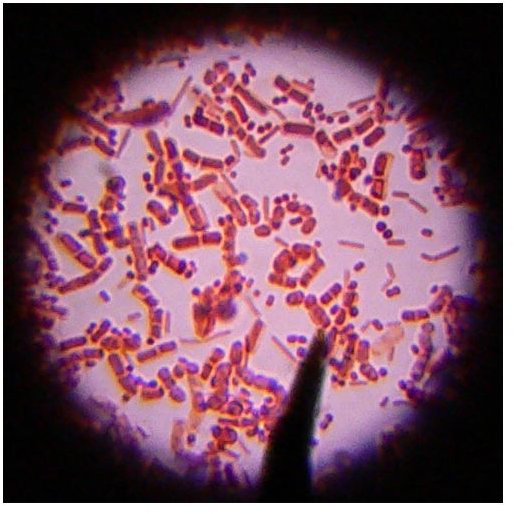Some Basic Facts About Cocci Bacteria (Spherical Shaped Bacteria)
Cocci Bacteria - The Basic Info
Bacteria comes in three general shapes: spherical, rod-shaped and spiral. This article will focus on the spherical (sometimes oval) shaped bacteria. If you are talking about a single bacterium, the term is coccus, and the plural form is cocci.
A coccus organism is capable of living on its own, but it may also live in a formation along with other cocci bacteria. Two joined cocci are known a diplococci, while four arranged in a square shape are called a tetrad. The Sarcina genus arrange themselves in groups of eight, in a cube shape. The other common arrangements include a chain of bacteria (known as streptococci) or irregular clusters of bacteria (known as staphylococci). The average size of a coccus bacterium is 0.5 - 1 micrometer.
Many genera of cocci bacteria are Gram-positive, meaning they retain the crystal violet dye used during the Gram staining procedure. There are several Gram-negative cocci, though, which will not retain the crystal violet dye but will instead turn a pink or red color following counterstaining.
Notable Cocci
The label cocci bacteria simply describes the shape of the bacteria, therefore it cannot be labeled as “good” or “bad” bacteria. Like all types of bacteria, some are commensal (meaning they are found in and on the human body without causing harm) while others are pathogenic (meaning they cause illness). Some species of cocci bacteria can be either good or bad, depending on the particular strain.
Some notable cocci bacteria include:
Staphylococcus aureus: These bacteria are often found in the nose and on the skin, and about 20% of humans are carriers. It is capable of causing various minor skin conditions, and it can cause more serious infections, like pneumonia, meningitis, and toxic shock syndrome (TSS). This Gram-positive bacteria can also cause food poisoning, by producing a toxin.
Streptococcus pneumoniae: This Gram-positive species can cause a range of conditions, in addition to pneumonia, including sinusitis, otitis, meningitis, sepsis, endocarditis, and peritonitis.
Streptococcus pyogenes: This species causes streptococcal pharyngitis, which is commonly referred to as “strep throat.” It can also cause rheumatic fever, scarlet fever, and necrotizing fasciitis (also known as the “flesh eating” bacterial infection). This Gram-positive bacteria can be treated with penicillin.
Streptococcus salivarius: Some subspecies of this bacterium are used in yogurt- and cheese-making processes.
Neisseria gonorrhoeae: These Gram-negative bacteria cause the sexually transmitted infection gonorrhea. This organism is fragile, and it is not found in the normal flora of the human body; it is only found following sexual contact with an infected individual.
Neisseria meningitidis: Very similar to N. gonorrhoeae, these bacteria are often found in humans who are acting as carriers. It can cause either meningococcemia, which causes skin lesions, or bacterial meningitis, which is a potentially fatal swelling of the lining of the brain.
These are only some basic facts about cocci. The world of bacteria is fascinating and varied, and this article doesn’t even begin to scratch the surface. Pick up a book on microbiology, or scope out articles on Bright Hub for more information on these intriguing microorganisms.
References
Abedon, Stephen T. “Supplemental Lecture: Bacterial Cell Shapes and Arrangements.” March 28, 2011. https://mansfield.osu.edu/~sabedon/biol2010.htm.
Todar, Kenneth. 2011. https://www.textbookofbacteriology.net.
